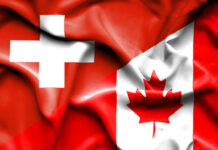Markets
The steep decline in energy prices over the past few months caused March headline inflation in Europe to decline substantially year-over-year (from 8.5% to 6.9%). Rising core inflation and high m/m readings however showed that this is only the easy part in the long journey back towards the 2% target. But with US (core) PCE inflation for February later on Friday also cooling slightly more than expected, the market focus lied elsewhere. The downleg in core bond yields accelerated, leading to losses in the US between 8.1 and 11.4 bps across the curve. German yields slid 6.6 to 9.6 bps. Equities ended the quarter on a positive note. The Euro Stoxx 50 rallied 0.69%. It even set a new YtD high intraday at 4325. US bourses rose between 1.26% (DJI) and 1.74% (Nasdaq). The euro on currency markets hit the March high at 1.0926 before technical resistance (and perhaps some euro fatigue) kicked in. EUR/USD eventually finished at 1.0839, down from 1.0905 at the open. The US dollar in general traded strong, gaining against most peers. The trade-weighted index moved higher from 102.19 to 102.50. Sterling remains an ocean of calm. EUR/GBP for most of the day held position just south of 0.88. Gold lost some territory but held comfortably above $1950/ounce. Brent oil closed in on the $80/b level for the first time since mid-March and soared past that during Asian dealings this morning after OPEC yesterday announced a surprise production cut (cfr. infra). Brent rallied more than 8% paring gains partially. It’s a two-sided story for yields. It could rekindle the inflationary fire (supporting yields through higher inflation expectations) but at the same time weigh on economic activity and in the end require a less aggressive monetary response (keeping a lid on real yields). The former outweighs for the time being though we are not convinced it will last all day. US cash yields jump up to 8 bps at the front end of the curve. Equities in the region trade mostly in the green. News flow apart from oil is thin otherwise. Japanese (see headline) and Chinese (Caixin man. PMI from 51.6 to 50 vs 51.4 expected) sentiment indicators disappointed. The dollar gains at the start of the new quarter. EUR/USD eases back below 1.08 and technical trading could take it back to 1.0735 in a first instance. The kiwi dollar underperforms this morning.
The US takes center stage is this holiday-shorted week (markets in the region closed on Good Friday). The eco calendar kicks off with the US manufacturing ISM today. If anything, we see some risks for a downward surprise given the recent turmoil. But we wouldn’t draw any conclusions from it as calm has returned in the meantime. If what happened to the likes of SVB is a one-off, then today’s potential undershoot might just as well reverse already next month. To that end, the market reaction today won’t tell us much either. More important data are due later this week with the US services ISM and the ADP job report on Wednesday and payrolls on Friday.
News and views
According the closely watched BoJ Tankan survey, sentiment among larger manufacturing companies unexpectedly declined from 7 to 1. This marked the fifth consecutive quarterly decline. The level is the lowest since end 2020. Japanese manufacturing companies apparently still suffer from higher raw material and fuel costs while at the same time export demand dwindles. The outlook by large manufacturers also eased from 6 to 3. However, the report wasn’t unequivocally negative. The assessment of large non-manufacturing companies improved from 19 to 20, the strongest level since end 2019. The outlook for the sector improved too (15 from 11). Small companies showed similar trends. The non-manufacturing recovers further from the sharp decline in activity due to the pandemic. Big firms also remain cautious on further investments. Investment is expected or rise a meagre 3.2% in fiscal year 2023-24. Companies expect inflation to decelerate from 2.8% in the next year, to 2.3% in three years and 2.1 in five years. The report probably will cause the BoJ to take a wait-and-see approach of any start of monetary policy easing.
The OPEC+ cartel over the weekend announced an unexpected cut in oil production which might additionally reduce supply by about 1.15 mln barrels per day. The cartel indicated that the move intends to support market stability. The decision came ahead of virtual Meeting of the OPEC+ ministerial panel scheduled for this week. Last October OPEC had already decided to reduce its output by 2 mln bpd starting from November to last until the end of this year. The additional cuts will start from May and also last until then end of the year. Brent oil in a first rection this morning jumped from close near $80 p/b to $86 p/b but currently again eased to $ 83.75 p/d.














